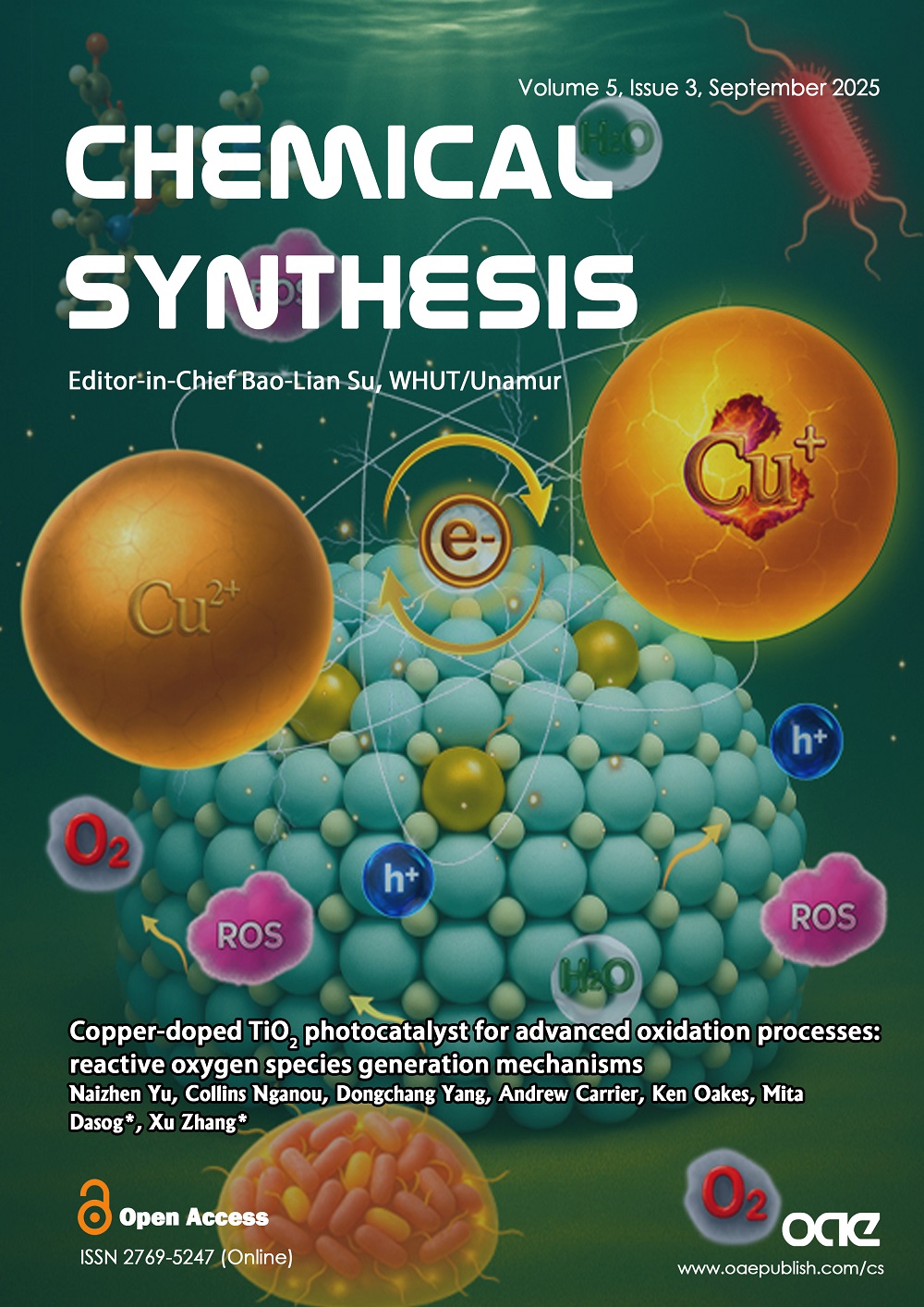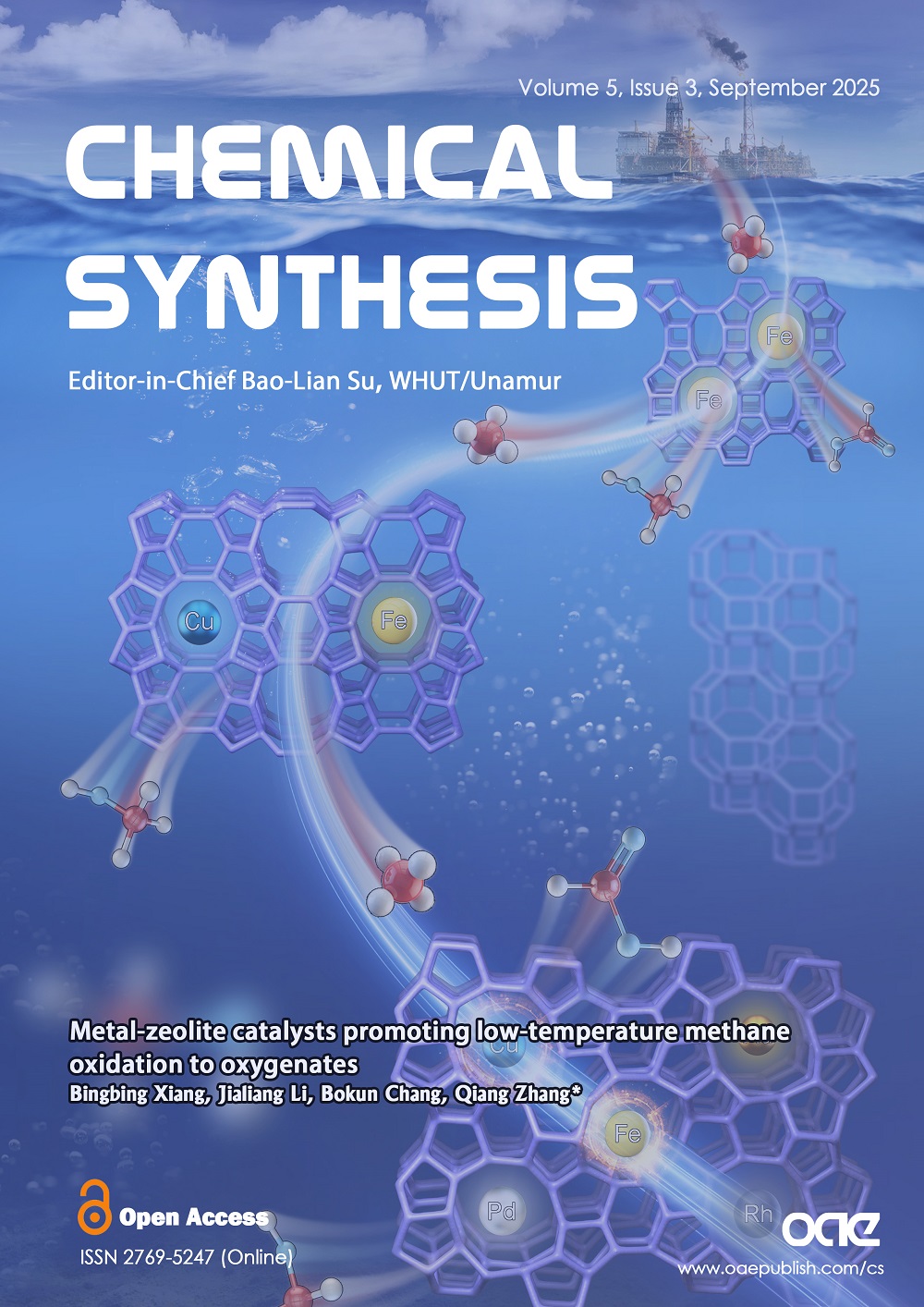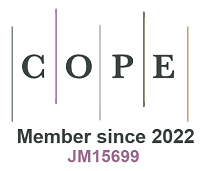Volume 5, Issue 3 (2025) – 22 articles
Cover Picture: Copper-doped anatase TiO2 (Cu/TiO2) has attracted significant attention in various sustainable chemical processes, including water splitting, carbon monoxide oxidation, carbon dioxide reduction, chemical synthesis, and advanced oxidation processes for water treatment. Reactive oxygen species (ROS) are involved in these processes, but a mechanistic understanding of ROS generation on Cu/TiO2 surfaces has not been established. Combining experimental investigation and computational simulation, this work provides unequivocal evidence for superoxide radical anion (O2•-) formation via reduction of the adsorbed oxygen by Cu+ and hydroxyl radical (•OH) production by oxidation of lattice oxygen within the bridging Cu-O-Ti structure on Cu/TiO2 surfaces. Under visible light irradiation, the ROS generation rates of Cu/TiO2 are 7.2 times higher for O2•- and 11.2 times higher for •OH than those of undoped TiO2. The superior performance of Cu/TiO2 has been demonstrated through its organic dye degradation, bactericidal activity, and biofilm disruption, indicating its wide applicability in water treatment and disinfection. The results and the methodologies will benefit the wide field of heterogeneous redox chemistry.
view this paper Back Cover Picture: Catalytic conversion of methane (CH4) into value-added chemicals provides a viable path to reduce dependency on crude oil. Despite the challenges associated with activating methane’s C–H bond and limiting side reactions, low-temperature oxidation of methane to oxygenates has emerged as a promising approach, often hailed as a “grail reaction”. Zeolite-based metal (metal-zeolite) catalysts facilitate methane oxidation at low temperatures, converting methane into oxygenates while minimizing the complete oxidation to carbon dioxide (CO2). This review highlights recent achievements in metal-zeolite catalysts for methane partial and coupling oxidation. With zeolite as the core, we explore the synthesis methods, metallic active sites, reaction mechanisms, and zeolite descriptors of metal-zeolite catalysts for methane partial oxidation. Additionally, we examine the critical role of mono- and bi-metallic species in metal-zeolite catalysts for methane coupling oxidation with carbon monoxide (CO). Finally, we discuss the challenges and opportunities for metal-zeolite catalysts in methane oxidation under mild conditions, proposing future directions for rational design of metal-zeolite catalysts, revealing reaction mechanisms through operando or in situ techniques, and leveraging artificial intelligence (AI) for enhanced catalytic efficiency.
view this paper









